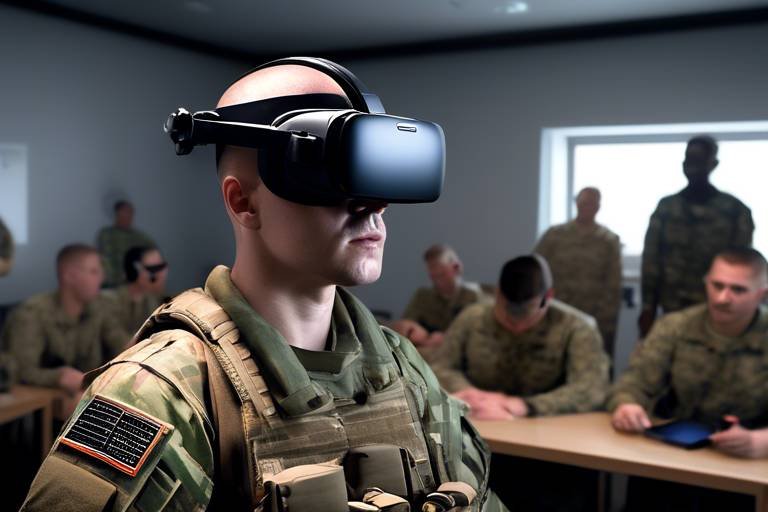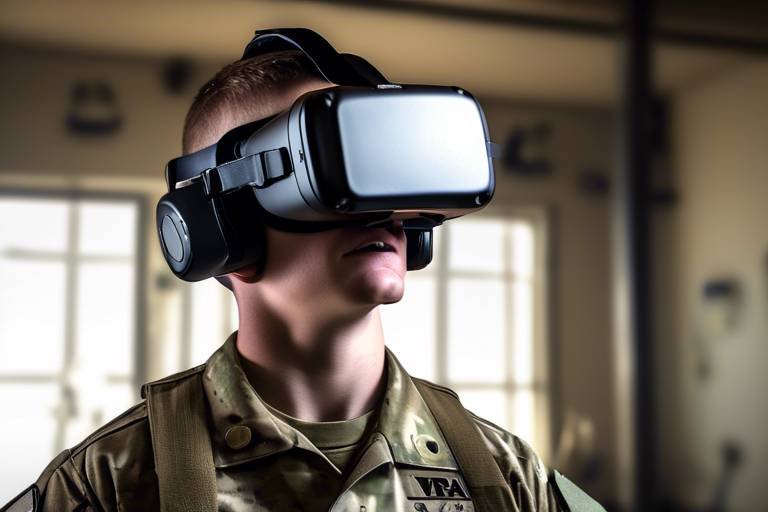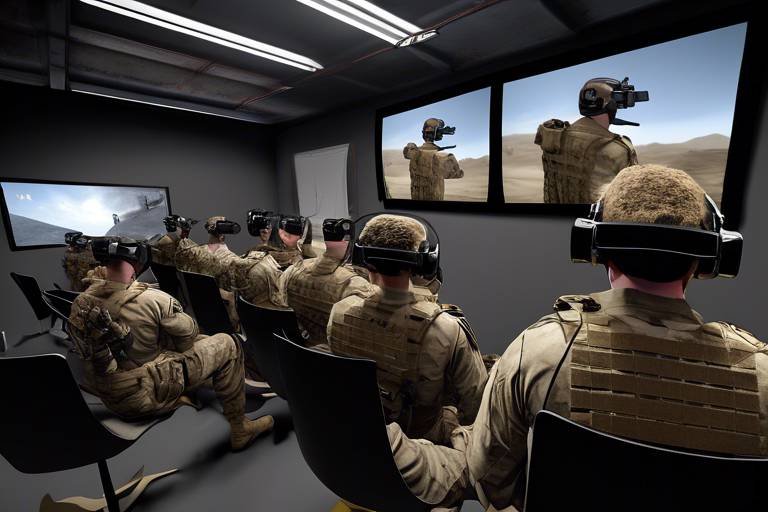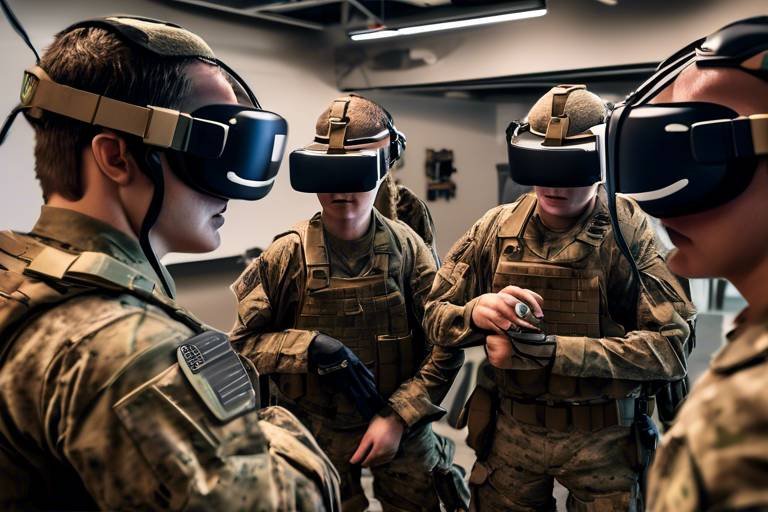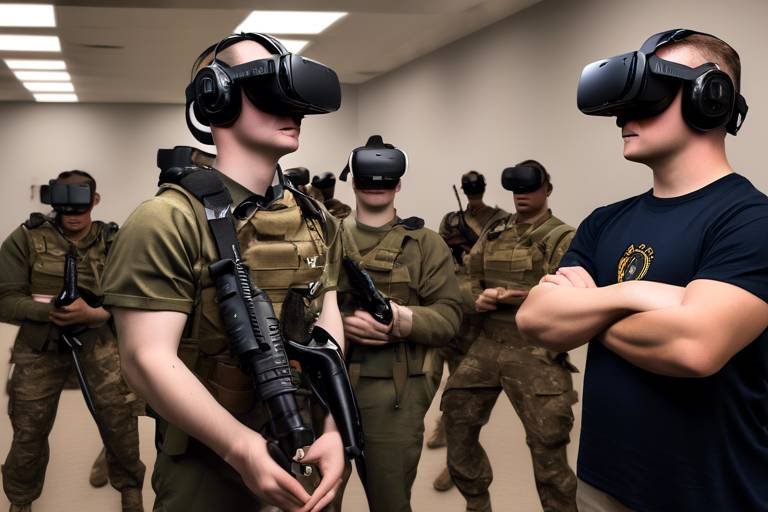Assessing the Effectiveness of VR in Decision-Making Drills
In recent years, Virtual Reality (VR) has emerged as a groundbreaking technology that is revolutionizing various fields, especially in decision-making drills. Imagine stepping into a fully immersive environment where you can practice critical decision-making skills without any real-world repercussions. This is the essence of VR training. It’s not just about playing games; it’s about creating realistic scenarios that can significantly enhance our decision-making capabilities. In this article, we will explore how VR enhances these skills through immersive training drills, examining its advantages, applications, and potential future developments across various industries.
To grasp the impact of VR on decision-making, we first need to understand the technology itself. At its core, VR technology combines hardware and software to create a simulated environment. Users wear a headset that tracks their movements and allows them to interact with the virtual world. This immersive experience is made possible through a combination of 3D graphics, motion tracking, and sometimes even haptic feedback devices that simulate touch. The psychological impact of this technology is profound; it tricks the brain into believing it is experiencing real-life scenarios, which can enhance learning and retention during training exercises.
One of the most significant advantages of using VR for decision-making drills is the level of engagement it offers. Unlike traditional training methods, VR provides a captivating experience that keeps users hooked. Imagine being in a high-stakes situation where every decision counts; this is what VR training simulates. Here are some key benefits:
- Realistic Simulations: VR creates scenarios that mirror real-life challenges, allowing users to practice in a controlled environment.
- Safe Environment: Participants can make mistakes and learn from them without the fear of real-world consequences.
- Enhanced Focus: The immersive nature of VR minimizes distractions, enabling participants to concentrate fully on the task at hand.
The versatility of VR technology means it has found applications across numerous industries. In healthcare, for instance, medical professionals use VR to practice surgeries, honing their skills in a risk-free environment. The military employs VR for tactical decision-making drills, allowing soldiers to engage in complex scenarios that prepare them for real combat situations. Aviation training programs utilize VR to simulate flight conditions, giving pilots a chance to experience various emergencies without jeopardizing safety. In corporate settings, companies are leveraging VR to train employees in customer service scenarios, enhancing their interpersonal skills. Each of these examples showcases how VR is not just a novelty but a vital tool for enhancing decision-making capabilities.
When comparing VR training to traditional decision-making drills, the differences are striking. Traditional methods often rely on lectures and role-playing, which can be less engaging and effective. In contrast, VR training offers a more hands-on experience. Studies have shown that participants in VR training retain information better and report higher satisfaction levels. For instance, a recent study indicated that VR-trained individuals scored 30% higher in decision-making assessments compared to their peers who underwent traditional training. This remarkable statistic highlights the potential of VR to transform how we approach training.
Assessing the effectiveness of VR in decision-making drills requires a comprehensive approach. Various metrics and methodologies can be employed, including performance evaluations, participant feedback, and long-term retention studies. For example, organizations can measure improvement through pre- and post-training assessments to gauge skill enhancement. Feedback mechanisms, such as surveys and interviews, provide valuable insights into user experience and perceived benefits. Additionally, long-term studies can track how well participants retain skills over time, further underscoring the value of VR training.
User experience plays a crucial role in the success of VR training programs. Participants often report feeling more engaged and confident after completing VR drills. Comfort levels can vary, but many users appreciate the opportunity to practice in a safe, controlled environment. Feedback often highlights significant improvements in decision-making capabilities, with users expressing how the immersive nature of VR helped them understand complex scenarios better. This positive user experience is essential for the widespread adoption of VR training methodologies.
Despite its many advantages, implementing VR in decision-making training is not without challenges. Technological barriers, such as the cost of equipment and software, can be prohibitive for some organizations. Additionally, there is a need for adequate training for both users and facilitators to ensure effective use of the technology. Some users may also experience discomfort or motion sickness, which can hinder their training experience. Addressing these challenges is vital for maximizing the potential of VR in decision-making drills.
Looking ahead, the future of VR in decision-making training is bright. As technology continues to advance, we can expect more sophisticated simulations that integrate artificial intelligence and machine learning. These advancements could lead to personalized training experiences tailored to individual users’ needs. Furthermore, the integration of VR with other technologies, such as augmented reality (AR), could create even more immersive training environments. As the landscape of training methodologies evolves, VR is poised to play a pivotal role in shaping the future of decision-making skills development.
- What is VR training? VR training involves using virtual reality technology to create immersive learning experiences that enhance decision-making and skill development.
- How does VR improve decision-making skills? By simulating realistic scenarios, VR allows users to practice decision-making in a safe environment, leading to better retention and understanding.
- What industries benefit from VR training? Industries such as healthcare, military, aviation, and corporate sectors are leveraging VR for enhanced training outcomes.
- Are there any drawbacks to VR training? Yes, challenges include high costs, potential discomfort for users, and the need for proper training for effective use.
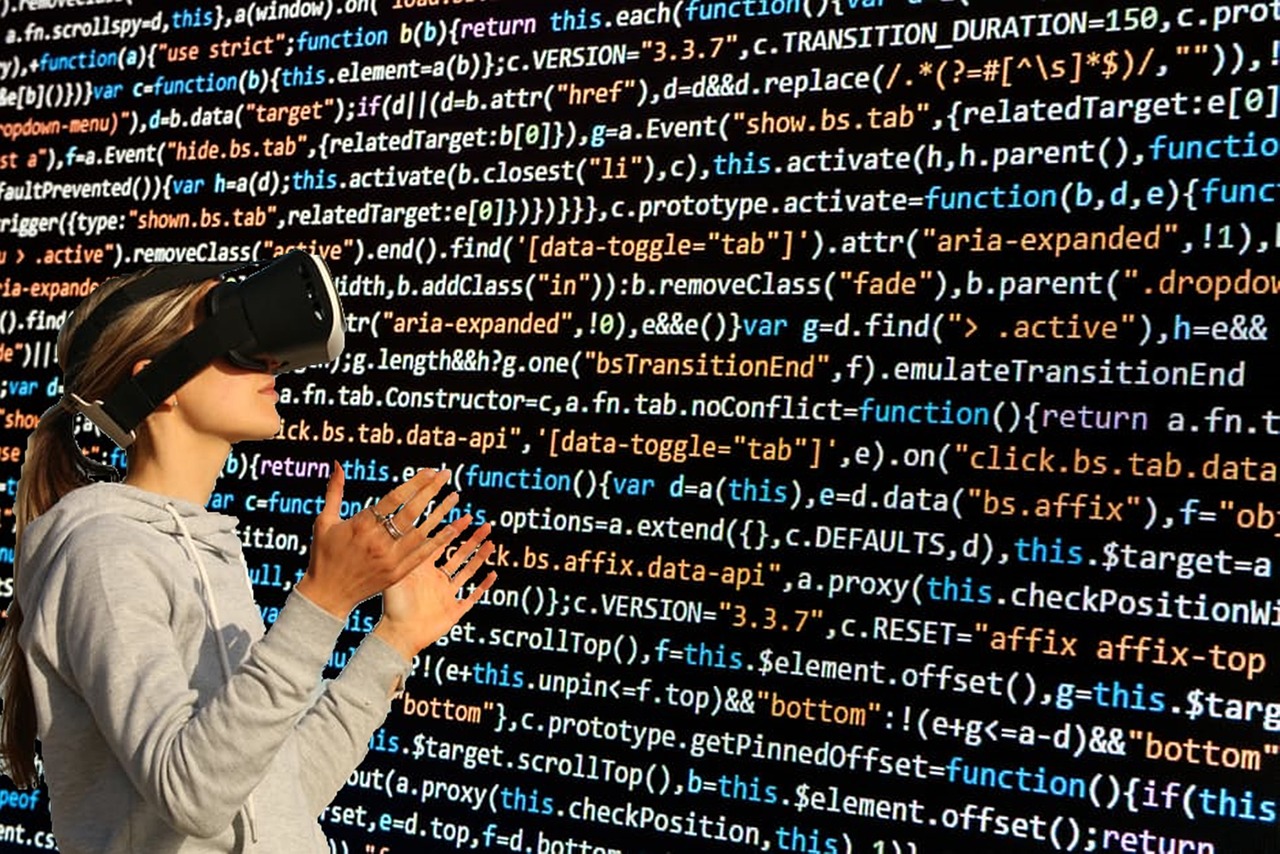
Understanding VR Technology
Virtual Reality (VR) is not just a futuristic concept; it's a dynamic technology that immerses users in a computer-generated environment, making them feel as though they are truly present in that space. Imagine slipping on a headset and suddenly finding yourself in a bustling city, a serene forest, or even the cockpit of a fighter jet! This sense of presence is achieved through a combination of hardware and software components that work together seamlessly.
The core components of VR technology include:
- Head-Mounted Displays (HMDs): These are the most recognizable part of VR. HMDs provide the visual and auditory immersion, displaying 3D environments and delivering spatial audio.
- Motion Tracking Sensors: These devices track the user's movements in real time, allowing them to look around and interact with the virtual environment naturally.
- Input Devices: Controllers, gloves, and other input devices allow users to manipulate objects and navigate through the VR space.
When combined, these components create a powerful experience that can significantly impact the way users learn and make decisions. The psychological effects of VR are profound; users often report feeling a strong emotional connection to the scenarios they encounter. This immersive quality can enhance learning and retention, making VR an invaluable tool in training environments.
Moreover, VR technology leverages the concept of embodiment, where users feel as though they are part of the virtual world. This phenomenon can lead to increased engagement and motivation, making training exercises not only more effective but also more enjoyable. For instance, when a medical professional practices a surgical procedure in VR, they can visualize the anatomy and the steps involved, which can lead to better outcomes in real-life situations.
In summary, understanding VR technology involves recognizing its components and the psychological impact it has on users. As we delve deeper into the applications and benefits of VR in decision-making drills, it's crucial to appreciate how this technology transforms traditional training methods into immersive experiences that can lead to enhanced decision-making skills.

Benefits of VR in Training
When it comes to training, especially in decision-making scenarios, Virtual Reality (VR) is like a magic wand that transforms the mundane into the extraordinary. Imagine stepping into a world where you can practice high-stakes decisions without any real-world repercussions. This is precisely what VR offers—an immersive environment where users can engage with realistic simulations that mimic real-life situations. The first major benefit of VR in training is the enhanced engagement it provides. Traditional training methods often struggle to hold participants' attention, but VR captivates users with its lifelike graphics and interactive elements, making them feel as though they are truly part of the scenario.
Moreover, VR allows for realistic simulations that are incredibly valuable for decision-making drills. For instance, a surgeon can practice a complex operation in a virtual operating room, or a pilot can navigate through challenging weather conditions in a flight simulator. These simulations not only replicate the pressures of real-life situations but also allow for repeated practice, which is crucial for skill retention. In addition, the ability to fail safely in a virtual environment means that learners can make mistakes and learn from them without any negative consequences. This aspect of VR training fosters a culture of experimentation and learning, which is often stifled in traditional training settings.
Another significant advantage is the opportunity for personalized feedback. With VR, trainers can monitor participants in real-time and provide instant feedback on their performance. This immediate response helps learners correct their mistakes on the spot, reinforcing positive behaviors and decision-making processes. For example, in a corporate training environment, employees can engage in role-playing scenarios where they receive tailored advice on their negotiation tactics or customer interactions, leading to improved outcomes in their real jobs.
Additionally, VR training can be conducted in a safe environment that eliminates the risks associated with real-world practice. This is particularly essential in fields such as healthcare and emergency response, where the stakes are incredibly high. By allowing individuals to practice in a controlled setting, VR not only enhances their skills but also boosts their confidence. Imagine a firefighter training for a rescue operation in a burning building; with VR, they can experience the heat and chaos without any danger, preparing them mentally and physically for the real thing.
In summary, the benefits of VR in training extend beyond mere engagement and realism. They encompass a comprehensive learning experience that includes personalized feedback and safe practice environments. As we continue to explore the potential of VR, it becomes increasingly clear that this technology is not just a trend but a revolutionary tool in the realm of training and decision-making. The future looks bright for VR, and the possibilities are endless!

Applications in Various Industries
Virtual Reality (VR) has swiftly transitioned from a futuristic concept to a powerful tool utilized across various industries, revolutionizing how professionals approach decision-making training. In healthcare, for instance, medical professionals use VR simulations to practice complex surgical procedures. Imagine a surgeon performing a delicate operation in a virtual environment where mistakes do not carry real-world consequences. This immersive experience not only enhances their skills but also builds confidence, as they can repeatedly practice until they master the procedure.
In the military sector, VR is employed for tactical decision-making drills. Soldiers can engage in realistic combat scenarios that mimic the chaos of a battlefield. This method allows them to develop critical thinking and quick decision-making skills under pressure, which are essential in real-life situations. The psychological impact of these immersive experiences can be profound, as soldiers learn to anticipate enemy movements and make strategic decisions that could mean the difference between life and death.
Aviation is another domain where VR shines. Pilots use flight simulators that replicate various flight conditions, including emergencies. This hands-on training method ensures they are well-prepared for any situation they might face in the air. The ability to practice maneuvers and emergency responses in a controlled environment significantly enhances safety and decision-making efficiency. Just think about it: a pilot can experience a bird strike or engine failure in a simulator without any risk to passengers or crew.
Corporate settings are also leveraging VR for training employees in decision-making processes. Companies are developing VR programs that simulate real-world business scenarios, allowing employees to engage with challenges they may face in their roles. This training method fosters a deeper understanding of the consequences of their decisions, ultimately leading to more informed choices in their actual jobs. By immersing employees in these scenarios, companies can observe how they react and adapt, providing valuable insights into their decision-making styles.
To illustrate the diversity of VR applications, consider the following table that summarizes its usage across different sectors:
| Industry | Application | Benefits |
|---|---|---|
| Healthcare | Surgical simulations | Improved skills, confidence building |
| Military | Tactical decision-making drills | Enhanced strategic thinking, realistic scenarios |
| Aviation | Flight simulators | Emergency preparedness, safety training |
| Corporate | Business scenario simulations | Informed decision-making, skill development |
As we can see, the applications of VR in decision-making training are vast and varied. Each industry harnesses the power of VR to create tailored experiences that address specific challenges and needs. The potential for VR to enhance decision-making capabilities is only just beginning to be realized, and as technology continues to evolve, we can expect even more innovative applications to emerge.
- What industries are currently using VR for decision-making training? VR is being used in healthcare, military, aviation, and corporate environments, among others.
- How does VR improve decision-making skills? VR provides immersive training experiences that allow users to practice decision-making in realistic scenarios without real-world consequences.
- Are there any limitations to using VR in training? Yes, challenges include technological barriers, costs, and the need for adequate training for both users and facilitators.
- What is the future of VR in decision-making training? The future looks promising, with potential advancements in technology and integration with other training methodologies.
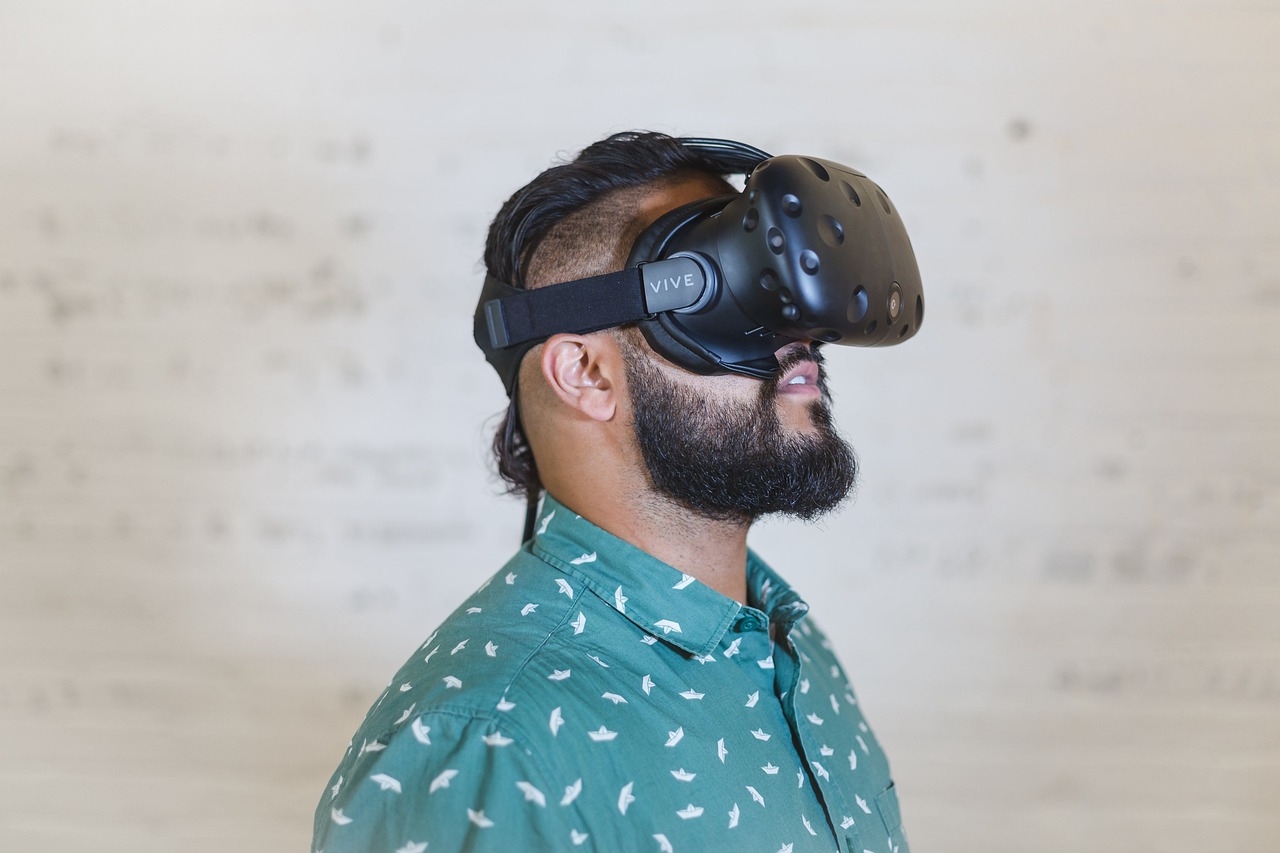
Comparative Analysis with Traditional Methods
When it comes to training for decision-making, the debate between virtual reality (VR) and traditional methods is heating up. Traditional training methods, such as role-playing and simulations in a classroom setting, have served us well for decades. However, as technology advances, it's crucial to explore how VR stacks up against these time-honored approaches. So, what makes VR a game-changer in this arena? Let's dive into the details!
One of the most significant differences lies in the level of immersion. Traditional methods often rely on theoretical frameworks and scripted scenarios that may lack the emotional and psychological engagement required for effective learning. In contrast, VR provides a fully immersive experience, allowing users to engage with realistic environments and make decisions in real time. This heightened sense of presence can lead to more profound learning outcomes, as participants are not just passive observers but active decision-makers in a simulated world.
Another critical factor to consider is skill retention. Studies suggest that skills learned in VR environments are retained longer than those acquired through traditional methods. This phenomenon can be attributed to the engaging nature of VR, which often leads to a more memorable experience. For instance, a medical professional practicing a surgical procedure in VR is likely to remember the steps better than if they had merely read about them or watched a video. This retention is vital, especially in high-stakes fields such as healthcare and aviation, where every decision can have significant consequences.
Moreover, the feedback mechanism in VR training is often more immediate and impactful. In traditional settings, feedback can be delayed or generalized, leaving participants unsure about their performance. In contrast, VR systems can provide real-time feedback, allowing users to adjust their strategies and improve instantly. Imagine a military officer navigating a combat scenario in VR; they can receive instant insights on their decision-making, helping them refine their skills on the spot.
However, it's essential to acknowledge that traditional methods still hold value, particularly in terms of cost and accessibility. Not every organization can afford the latest VR technology or the infrastructure needed to implement it effectively. Many traditional training methods are more accessible and can be conducted with minimal resources. Furthermore, some individuals may feel more comfortable in a traditional classroom environment, where they can interact with peers and instructors face-to-face.
To illustrate these differences, consider the following
| Criteria | Traditional Methods | VR Training |
|---|---|---|
| Immersion Level | Moderate | High |
| Skill Retention | Varies | Higher |
| Feedback | Delayed | Immediate |
| Cost | Lower | Higher |
| Accessibility | High | Moderate |
In summary, while traditional methods of decision-making training have their merits, the advantages of VR are hard to ignore. The immersive experience, coupled with improved skill retention and immediate feedback, positions VR as a formidable contender in the training landscape. However, the choice between VR and traditional methods ultimately depends on the specific needs and resources of the organization. As we move forward, a blended approach that utilizes the strengths of both methods may be the most effective way to prepare individuals for real-world decision-making challenges.
- What are the primary advantages of using VR for training? VR offers immersive experiences, better skill retention, and immediate feedback, making it a powerful tool for decision-making training.
- Are traditional training methods still effective? Yes, traditional methods are still valuable, particularly for accessibility and cost-effectiveness.
- Can VR training be integrated with traditional methods? Absolutely! A blended approach can leverage the strengths of both VR and traditional training methods.
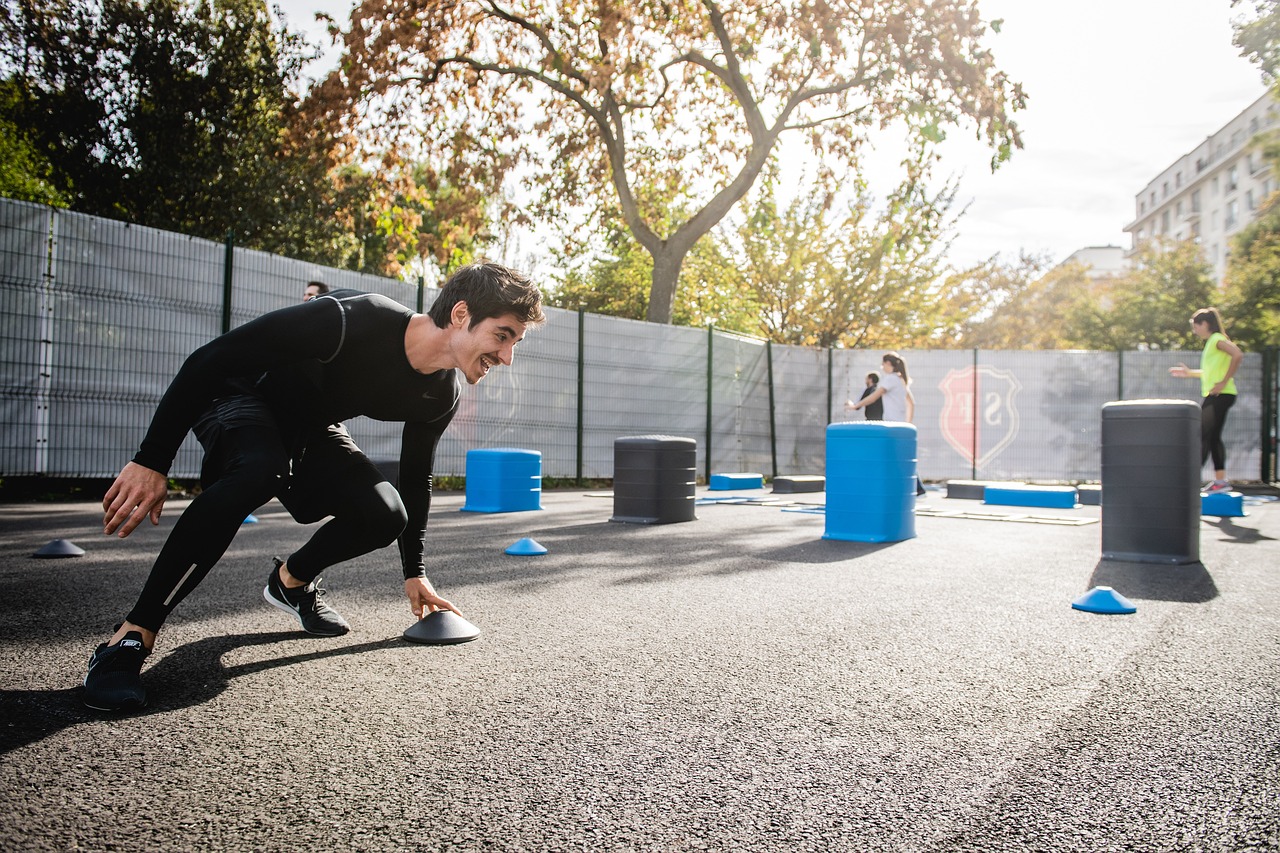
Measuring Effectiveness
When it comes to assessing the effectiveness of virtual reality (VR) in decision-making drills, one might wonder: how do we truly measure its impact? The answer lies in a blend of quantitative and qualitative metrics that provide a holistic view of VR's capabilities. Performance evaluations are often at the forefront of this assessment. These evaluations can include pre- and post-training tests that gauge the participants' decision-making skills before and after the VR experience. This method not only highlights the immediate benefits of VR training but also helps in identifying areas that may require further development.
Another vital aspect to consider is feedback mechanisms. Gathering insights from participants about their experiences can provide invaluable data that numbers alone cannot convey. For instance, participants might express feelings of increased confidence or improved situational awareness after engaging in VR drills. This subjective feedback can be instrumental in understanding how well the training translates into real-world applications. Additionally, comfort levels during the VR experience can significantly affect outcomes. If users feel uneasy or disoriented, it could hinder their ability to learn effectively, thus skewing the results of the training.
Long-term retention studies are also crucial in measuring effectiveness. It’s one thing to perform well immediately after training, but what about weeks or months later? By conducting follow-up assessments, trainers can determine whether the skills learned in VR have been retained and applied in real-life scenarios. This longitudinal approach offers a deeper insight into the sustainability of the training's impact.
To illustrate these points, consider the following table that summarizes various metrics used in measuring the effectiveness of VR in decision-making drills:
| Metric | Description | Purpose |
|---|---|---|
| Performance Evaluations | Pre- and post-training assessments | To measure skill improvement |
| User Feedback | Participant insights on their experiences | To gauge comfort and perceived improvement |
| Long-term Retention Studies | Follow-up assessments after training | To evaluate skill retention over time |
In summary, measuring the effectiveness of VR in decision-making drills is a multi-faceted endeavor. By combining various metrics such as performance evaluations, user feedback, and long-term retention studies, we can gain a comprehensive understanding of how VR impacts decision-making skills. This approach not only enhances training methodologies but also ensures that the investment in VR technology yields tangible results.
- What is the primary benefit of using VR for decision-making training? VR provides immersive simulations that allow users to practice decision-making in a safe environment, enhancing learning and retention.
- How do performance evaluations work in VR training? Participants take assessments before and after VR training to measure skill improvements and effectiveness.
- Can VR training be applied in various industries? Yes, VR is utilized in healthcare, military, aviation, and corporate settings, among others, for decision-making drills.
- What are the challenges of implementing VR in training? Challenges include technological barriers, costs, and the need for adequate training for both users and facilitators.

User Experience and Feedback
When it comes to the adoption of virtual reality (VR) in decision-making drills, user experience and feedback play a pivotal role in shaping its effectiveness and acceptance. Participants often find themselves immersed in a world that not only replicates real-life scenarios but also enhances their ability to make quick, informed choices. Imagine stepping into a virtual environment where every sound, sight, and interaction feels real; this is the magic of VR training. But what do users really think about it?
Feedback from users typically highlights several key aspects of their experience. Many report a significant increase in engagement levels compared to traditional training methods. The immersive nature of VR captures attention in a way that conventional drills simply cannot. Participants feel more involved, leading to a deeper understanding of the scenarios they encounter. In fact, a recent study showed that 85% of users felt more engaged during VR training sessions than in traditional classroom settings.
Comfort levels during these training sessions are also crucial. While some users initially express hesitation about using VR, most quickly adapt and report feelings of safety within the virtual environment. This safety allows them to make mistakes without real-world consequences, which is vital for learning. Users appreciate the opportunity to practice high-stakes decisions in a controlled space, where they can experiment and refine their skills. This sentiment is echoed in feedback where participants have noted:
"I felt like I was actually there, making decisions in real-time. It was exhilarating!"
"I could try different strategies without the fear of failing in real life."
Moreover, many users have expressed that they perceive a tangible improvement in their decision-making capabilities post-training. They report enhanced confidence when faced with similar situations in real life, attributing this newfound assurance to their VR experiences. For instance, a corporate employee who underwent VR training for crisis management stated, "The VR sessions made me feel prepared for any challenge. I can think on my feet much better now."
To better understand the overall user experience, we can look at a
| Feedback Theme | User Sentiment |
|---|---|
| Engagement | High |
| Comfort Level | Improved with use |
| Perceived Skill Improvement | Significant |
| Realism of Scenarios | Very Realistic |
However, it’s essential to acknowledge that not all feedback is glowing. Some users have expressed discomfort with the technology itself, citing issues such as motion sickness or the need for more intuitive controls. These challenges underline the importance of continuous improvement in VR training systems. As developers and facilitators gather user feedback, they can work towards creating more user-friendly and accessible experiences.
In conclusion, the user experience in VR training for decision-making drills is overwhelmingly positive, with many participants reporting increased engagement, improved comfort levels, and significant enhancements in their decision-making skills. However, ongoing improvements based on user feedback will be crucial to overcoming the challenges that some users face, ensuring that VR training remains an effective tool in various fields.
- What is the primary benefit of using VR for decision-making training?
VR provides an immersive environment that enhances engagement and allows for realistic practice without real-world consequences. - Can VR training lead to improved decision-making skills?
Yes, many users report feeling more confident and better prepared after participating in VR training drills. - Are there any drawbacks to VR training?
Some users experience discomfort, such as motion sickness, and there is a need for intuitive controls and user-friendly interfaces. - How do organizations gather feedback from users?
Organizations often conduct surveys, interviews, and focus groups to understand user experiences and areas for improvement.

Challenges and Limitations
While the integration of Virtual Reality (VR) into decision-making drills presents exciting opportunities, it is not without its challenges and limitations. One of the primary hurdles is the cost of implementation. High-quality VR systems, which include advanced hardware and software, can be prohibitively expensive for many organizations, particularly smaller businesses or educational institutions. This financial barrier can limit access to the technology and restrict its widespread adoption.
Moreover, the technological barriers associated with VR cannot be overlooked. Users often require specific technical knowledge to operate VR systems effectively. This can lead to a steep learning curve, which may deter potential users from fully engaging with the training. Additionally, not all VR systems are created equal; variations in hardware capabilities can lead to inconsistent training experiences. For instance, a high-end VR setup might provide a more immersive experience compared to a basic model, affecting the overall effectiveness of the training.
Another significant challenge lies in the need for adequate training for both users and facilitators. Without proper guidance, users may struggle to maximize the benefits of VR training. Facilitators must also be well-versed in VR technology to manage sessions effectively and troubleshoot any issues that arise. This requirement adds another layer of complexity and can necessitate additional resources and time, which some organizations may lack.
Furthermore, there are physical limitations that can affect the user experience. VR can induce discomfort or motion sickness in some individuals, which can hinder their ability to participate fully in training drills. This physiological response varies from person to person, and organizations must consider these factors when implementing VR training programs. Ensuring that participants are comfortable and can engage without adverse effects is crucial for the success of VR training.
Lastly, there is the issue of content development. Creating high-quality, relevant, and engaging VR training scenarios requires significant investment in time and expertise. Organizations may find it challenging to keep content updated and aligned with real-world scenarios, which can diminish the effectiveness of the training over time. If the VR scenarios do not reflect current practices or situations, users may not be able to transfer their skills effectively to real-life decision-making.
In summary, while VR offers transformative potential for decision-making drills, organizations must navigate a range of challenges and limitations. Addressing these issues will be essential for maximizing the effectiveness of VR training and ensuring that it becomes a staple in decision-making skill development across various industries.
- What are the main challenges of implementing VR in training? The main challenges include high costs, technological barriers, the need for user training, physical discomfort for some users, and content development issues.
- Can VR training lead to motion sickness? Yes, some individuals may experience motion sickness or discomfort while using VR, which can impact their training experience.
- How can organizations overcome the cost barrier? Organizations can explore partnerships with VR companies, seek grants, or start with lower-cost VR solutions to gradually integrate the technology.
- Is user training necessary for VR? Absolutely! Proper training for both users and facilitators is crucial to ensure effective use of VR technology and to maximize its benefits.
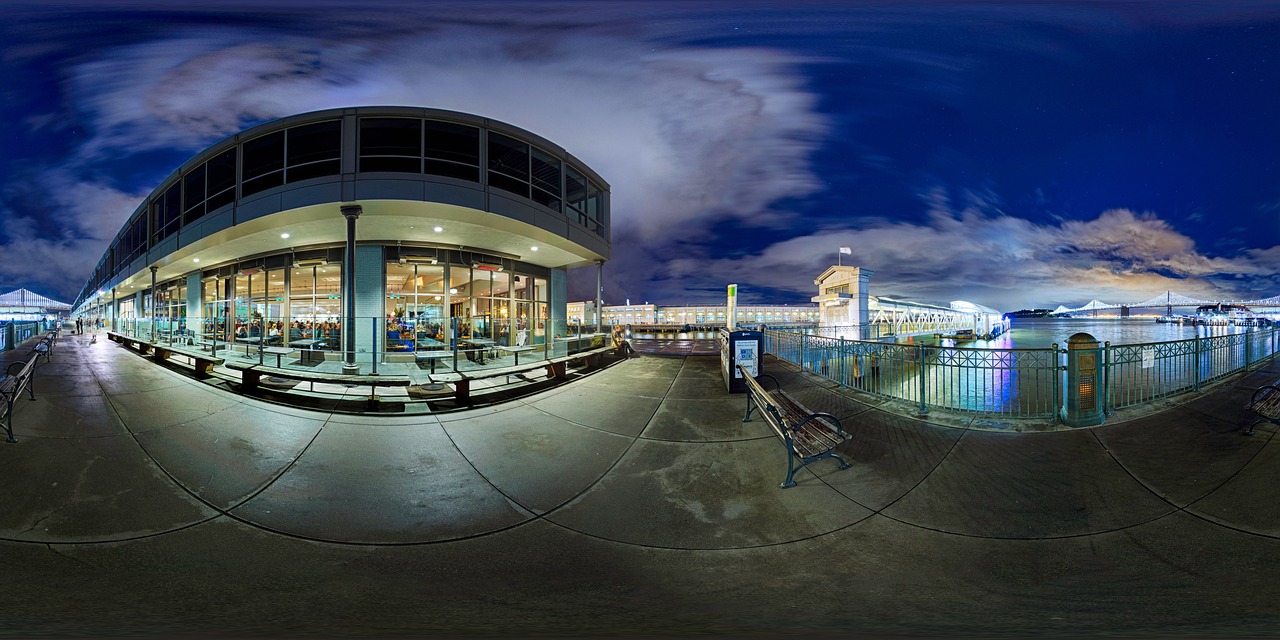
The Future of VR in Decision-Making Training
The future of Virtual Reality (VR) in decision-making training is not just bright; it’s positively dazzling! As technology continues to evolve at an unprecedented pace, the potential applications of VR are expanding far beyond what we can currently imagine. Picture this: immersive environments where trainees can practice their decision-making skills in real-time scenarios that mimic real-life challenges. This isn’t science fiction; it’s the near future of training across various industries.
One of the most exciting aspects of VR technology is its ability to integrate with other emerging technologies. For instance, the combination of VR with Artificial Intelligence (AI) could create training programs that adapt to the user’s performance, offering personalized feedback and challenges that evolve as the trainee improves. Imagine a virtual coach that analyzes your decisions in real-time and suggests adjustments to enhance your performance. This level of customization could revolutionize how we approach training, making it more effective than ever.
Moreover, as VR hardware becomes more affordable and accessible, we can expect a surge in its adoption across various sectors. Healthcare, for instance, could benefit immensely from VR training programs that enable medical professionals to practice surgical procedures or emergency response scenarios in a risk-free environment. This not only enhances their skills but also boosts their confidence when faced with real-life situations.
In the corporate world, companies are already exploring VR for leadership training and team-building exercises. Imagine a team of employees navigating a virtual crisis together, making critical decisions in a simulated environment that mirrors their actual workplace challenges. This kind of training fosters collaboration and enhances problem-solving skills, preparing employees for high-stakes situations.
However, the future of VR in decision-making training isn’t without its challenges. The need for robust infrastructure, skilled facilitators, and ongoing support will be crucial in making VR a staple in training programs. Organizations will need to invest not just in the technology itself but also in the training of personnel who will guide users through these immersive experiences.
As we look ahead, we can expect to see VR training becoming more mainstream, with organizations recognizing its value in enhancing decision-making capabilities. The integration of gamification elements into VR training could further increase engagement, making learning more enjoyable and effective. Picture a scenario where trainees earn points and rewards for making sound decisions in a virtual environment. This could transform the way we perceive training, turning it into an engaging and competitive experience.
In conclusion, the future of VR in decision-making training is not just about technological advancements; it's about creating a holistic learning experience that prepares individuals for real-world challenges. As we embrace this technology, we are not only enhancing skills but also reshaping the very fabric of how we learn and grow in our respective fields.
- What industries are likely to adopt VR for decision-making training? Industries such as healthcare, military, aviation, and corporate sectors are leading the way in adopting VR technologies for training purposes.
- How does VR improve decision-making skills? VR provides immersive environments that simulate real-life scenarios, allowing users to practice their decision-making skills without the risk of real-world consequences.
- Are there any challenges in implementing VR training? Yes, challenges include technological barriers, costs, and the need for adequate training for both users and facilitators.
- What is the future potential of VR in training? The future holds promise for VR to integrate with AI for personalized training experiences, making it more effective and engaging.
Frequently Asked Questions
- What is Virtual Reality (VR) and how does it work?
Virtual Reality (VR) is a technology that creates a simulated environment, allowing users to immerse themselves in a 3D space. By using VR headsets and controllers, users can interact with this environment as if they were actually there. The technology works by combining computer-generated graphics with sensory feedback, such as sound and touch, to enhance the realism of the experience.
- What are the benefits of using VR for decision-making drills?
Using VR for decision-making drills offers numerous benefits, including heightened engagement, realistic simulations, and a safe environment to practice without real-world consequences. Participants can make mistakes and learn from them in a controlled setting, enhancing their skills and confidence for real-life situations.
- In which industries is VR being applied for training purposes?
VR is making waves across various industries, including healthcare, military, aviation, and corporate settings. For instance, in healthcare, VR is used for surgical training, while the military employs it for combat simulations. Each sector is leveraging VR to improve decision-making skills and outcomes in unique ways.
- How does VR training compare to traditional methods?
When comparing VR training to traditional methods, VR often shows superior effectiveness in skill retention and user satisfaction. Traditional drills may lack the immersive and engaging elements that VR provides, leading to better learning outcomes and a more enjoyable experience for participants.
- What metrics are used to measure the effectiveness of VR training?
To assess the effectiveness of VR in decision-making drills, various metrics are utilized, including performance evaluations, participant feedback, and long-term retention studies. These methodologies help trainers understand how well users are absorbing and applying what they learn in VR scenarios.
- What do users typically say about their experiences with VR training?
User feedback on VR training is generally positive, with many participants noting significant improvements in their decision-making capabilities. Comfort levels during training can vary, but overall, users appreciate the immersive experience and the opportunity to practice skills in a risk-free environment.
- What challenges are associated with implementing VR in training?
While VR holds great promise for training, there are challenges to consider. These include technological barriers, high costs of equipment, and the need for adequate training for both users and facilitators. Addressing these challenges is crucial for successful implementation in various settings.
- What does the future hold for VR in decision-making training?
The future of VR in decision-making training looks bright, with potential advancements in technology and integration with other tools. As VR continues to evolve, we can expect more innovative training methodologies that further enhance learning experiences and outcomes across industries.


